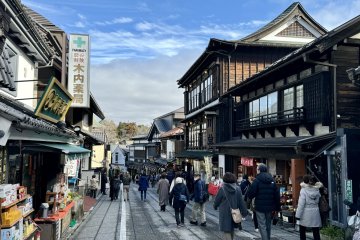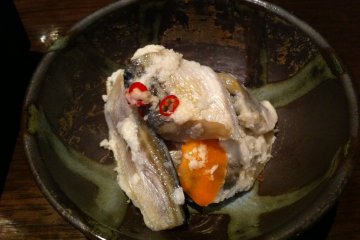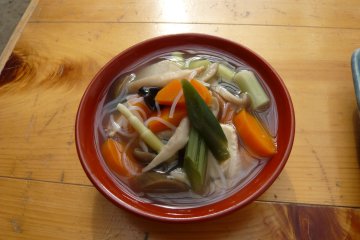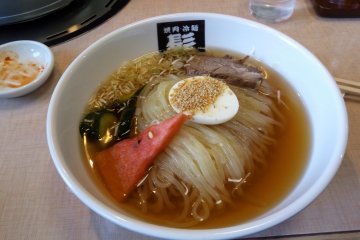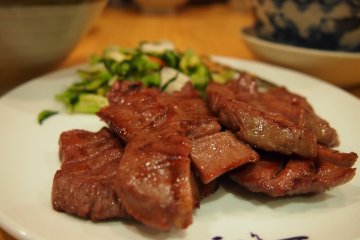Overview
Sitting in the far north of the main Honshu island lies Japan's Tohoku region. Its six prefectures - Akita, Aomori, Fukushima, Iwate, Miyagi and Yamagata - are home to a culinary heritage intimately bound with the region's famous winters. Soups, hotpots and stews feature prominently, unique methods of fermentation and food preservation methods are a treasure while meat and seafood dishes are a delight to eat. Here is a quick look at some of the foods of each prefecture in the Tohoku region.
Akita
The local food of Akita prefecture reflects the reality of its deep winters. Hearty hotpot dishes feature strongly including the very popular kiritanpo nabe that uses grilled skewers of rice and shottsuru nabe, a hotpot filled with fermented sandfish seasoning. Akita is also home to a unique sushi meal made from sandfish known as hatahata zushi and smokey pickled vegetables known as iburi gakko that use of a method of pickling found nowhere else in the country.

Aomori
With arguably the world's best tuna, it's easy to imagine that the local food of Aomori prefecture is nothing but its famous maguro-don. However, barayaki grilled beef strips and onions are extremely popular while the cold winters have led to the creation of some properly hearty and belly warming hotpot dishes. These include jappajiru that makes use of the whole of the cod fish and and the miso-based kenojiru whose taste improves the more it is reheated.

Fukushima
With its rich in history and heritage, the local food of Fukushima prefecture is a variety of flavour and technique. The signature soup, kozuyu, uses dried scallop as its base seasoning while dobujiru is a hotpot dish simmered in miso instead of water. Nishin no sansho zuke are fermented herrings layered with peppers while enban gyoza are succulent dumplings arranged in a circle and fried until all are fused together into one crispy meal.

Iwate
Noodles play a dominant role in the local food culture of Iwate prefecture. Its most famous dish is undoubtedly the challenge of wanko soba with its little bowls of buckwheat soba. The sweet flavour of red bean paste as the broth for short noodles in azuki batto is a unique taste while the flat noodles of Morioka jajamen that are eventually mixed with a special egg soup the translucent starch noodles of the chilled Morioka reimen also feature.

Miyagi
There is a nice variety of foods to be had with the local food of Miyagi prefecture. Miyagi kaki are some of the nation's best oysters while salmon and roe are well represented in dishes like harakomeshi. A post-war opportunity saw the succulent grilling of beef tongue known as gyutan yaki spread like wildfire across the nation and those with a sweet tooth were not forgotten with zunda mochi, a dessert snack made from vibrant green soybeans and pounded rice.

Yamagata
The local food of Yamagata prefecture is definitely no stranger to soups and hotpots. Kasujiru sees salted salmon added to a broth of vegetables simmered in sake lees. A taste of the untamed can be found in sanasi nabe, a stew of mountain vegetables and, at times, bear or rabbit. Sake lees features again in dongara jiru, a hotpot that uses the entire codfish while hiya jiru is a chilled stew made from shellfish stock and mustard spinach.






